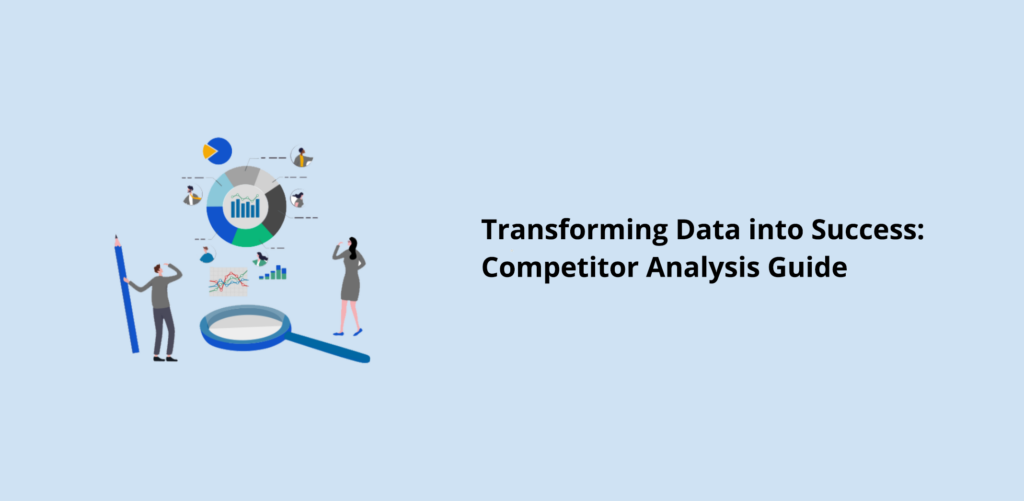Agency vs. Marketer: Interpreting Competitor Analysis
Agencies
Reason 1 – Prospecting: Get a hit list of companies willing to spend on advertising that are getting lackluster results, i.e., the IDEAL prospect.
Reason 2 – Persuading: A competitive list like the one below can really get a prospect more excited to work with you. When they see the names of their competition outperforming their efforts, they’re going to sign based on FOMO alone.
Reason 3 – Optimizing: Finally, you can use these details to find opportunities for your ads. Whether it’s tweaking your ad schedule, avoiding tough keywords, updating your copy, or tweaking your offer.
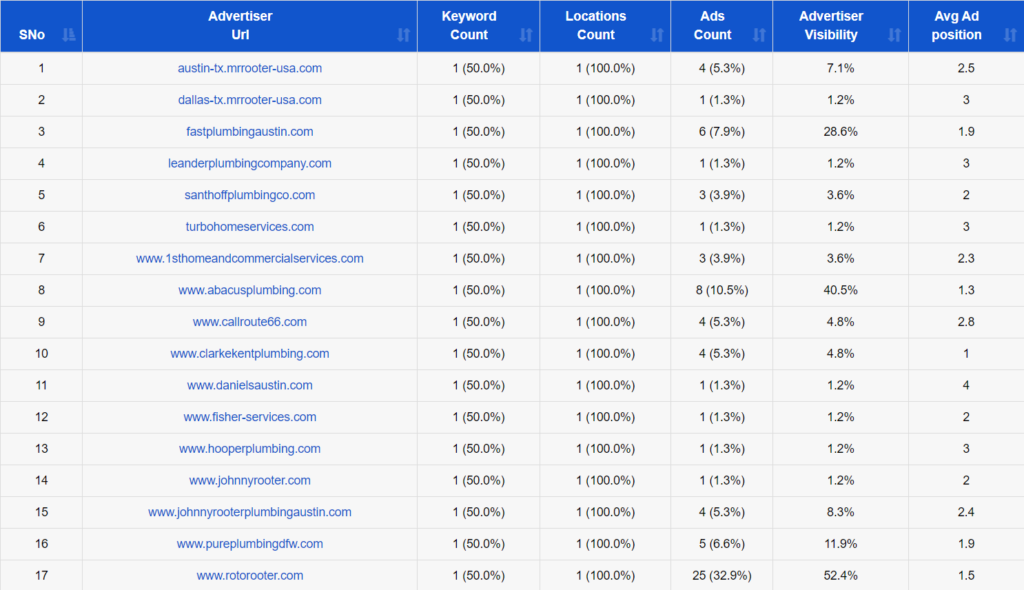
Marketers
If your company is one of the 17, and you find yourself somewhere in the middle, your ad visibility might only be at, say, 4.8%. The insights from tools like PPC Reveal can allow you to see that as a mid-sized company in this niche, you should aim for an ad visibility of at least 20-30%.
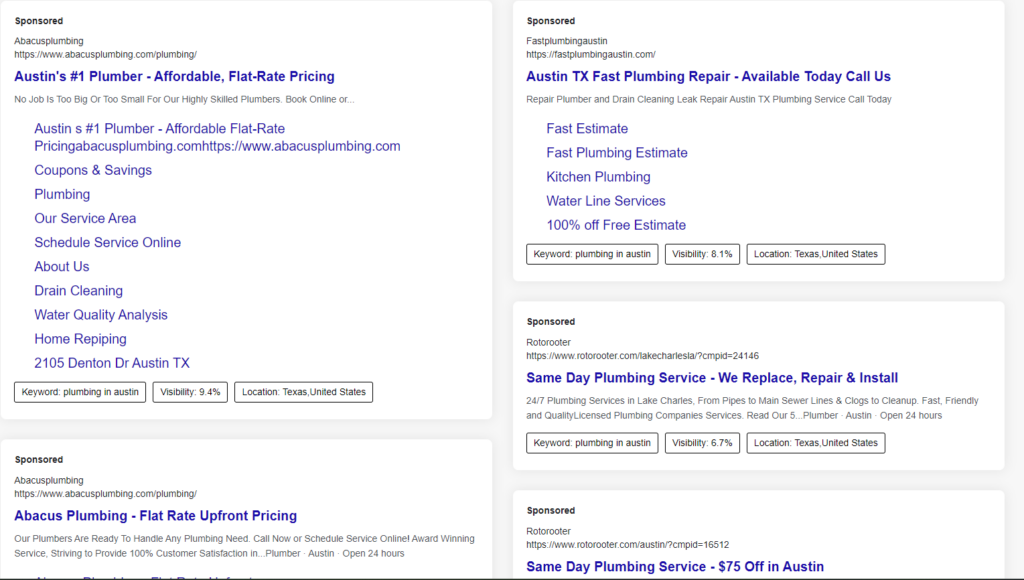
- Identify Top Competitors: Use ad intelligence tools like PPC Reveal to analyze the Competing Advertisers and Ad Schedule Stats in your industry. Look for patterns, such as a top competitor targeting homeowners with special discounts during winter pipe freeze periods.
- Analyze Their Strategy: Assess what makes their campaign successful. Is it the timing, the offer, or a combination of factors? For example, they might reach 50% of homeowners during winter with their discounts.
- Craft Your Unique Offer: Based on your analysis, develop your campaign. Perhaps offer free consultations during those critical winter months, a service your competitor doesn’t provide.
- Design Your Ad Campaign: Compose a compelling message like, “Our top competitors reach 50% of homeowners during winter. Let’s assure them of our local expertise with timely ads and special offers.”
- Set a Goal: Aim for an achievable target, such as boosting your visibility to 30%.
- Launch and Monitor: Implement your campaign and monitor its success, making adjustments as needed to stay competitive.
Data Points to Remember
Visibility
- Improving Your Brand Presence Through Comparative Analysis
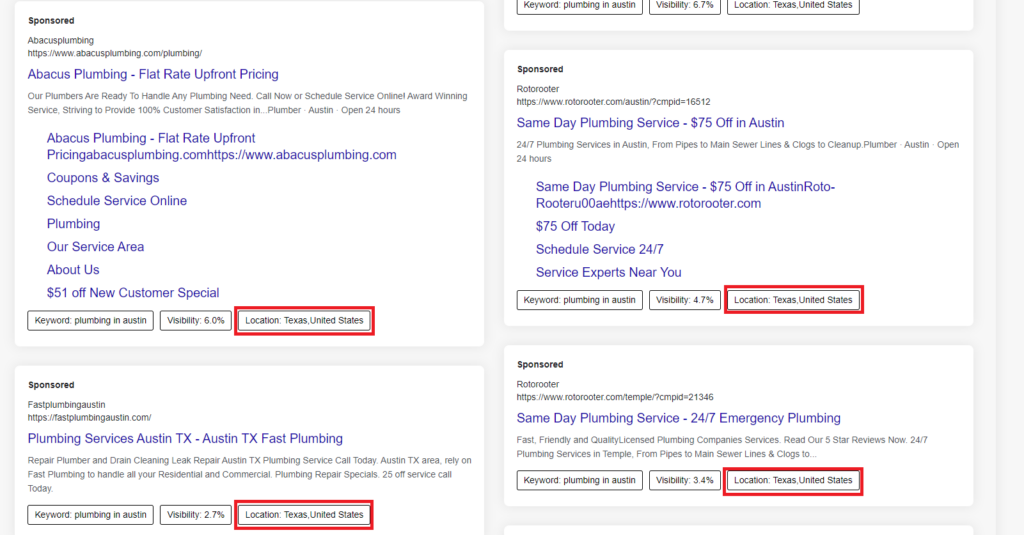
Location
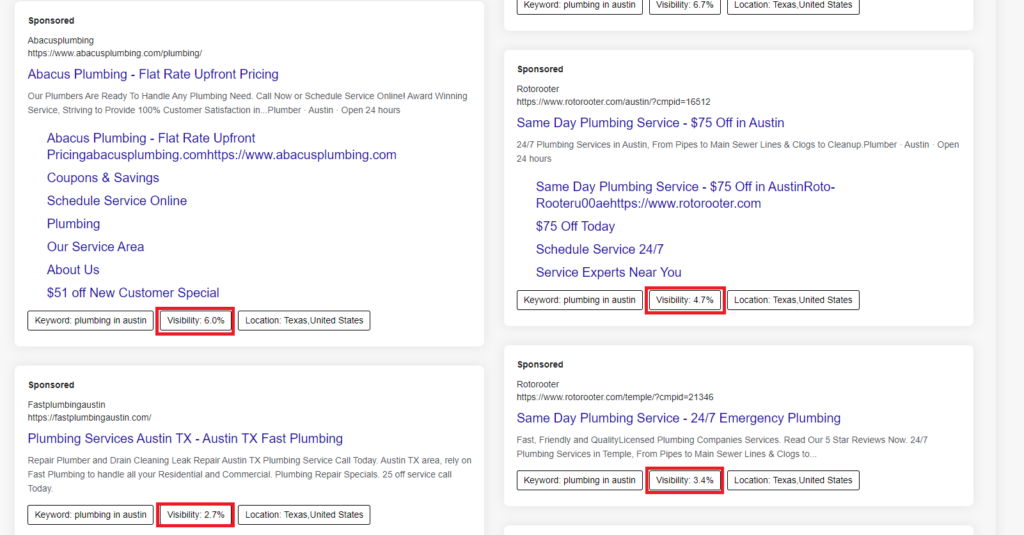
Identifying Opportunities Through Ad Schedule Analysis
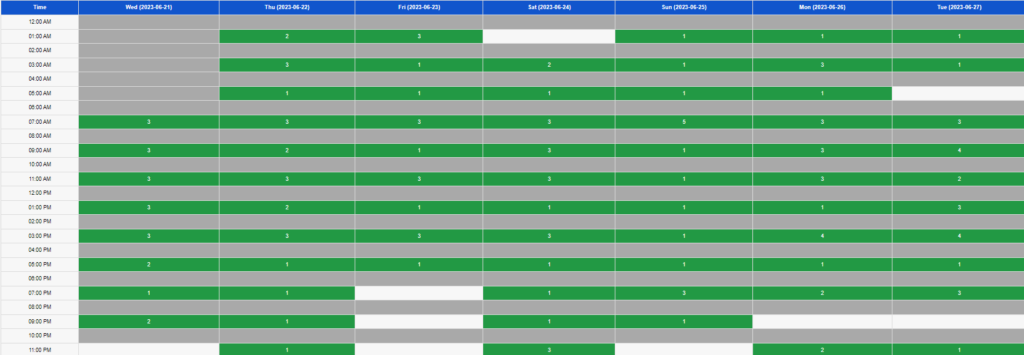
Takeaways
- Understand the Landscape: Start by mapping out your competition and identifying their strengths and weaknesses.
- Analyze Visibility: Gauge how your brand stands in comparison to others in terms of visibility, especially within your targeted geographical regions.
- Adapt Strategies: The journey from raw data to actionable strategies can be complex, but with the right approach, it becomes a stimulating process. Keep analyzing, adapting, and growing as the world of business waits for no one!
Ready to Unlock Your Potential? Dive into the goldmine of competitor analysis with PPC Reveal.
Try it FREE for 14 days
and transform raw data into actionable insights.

